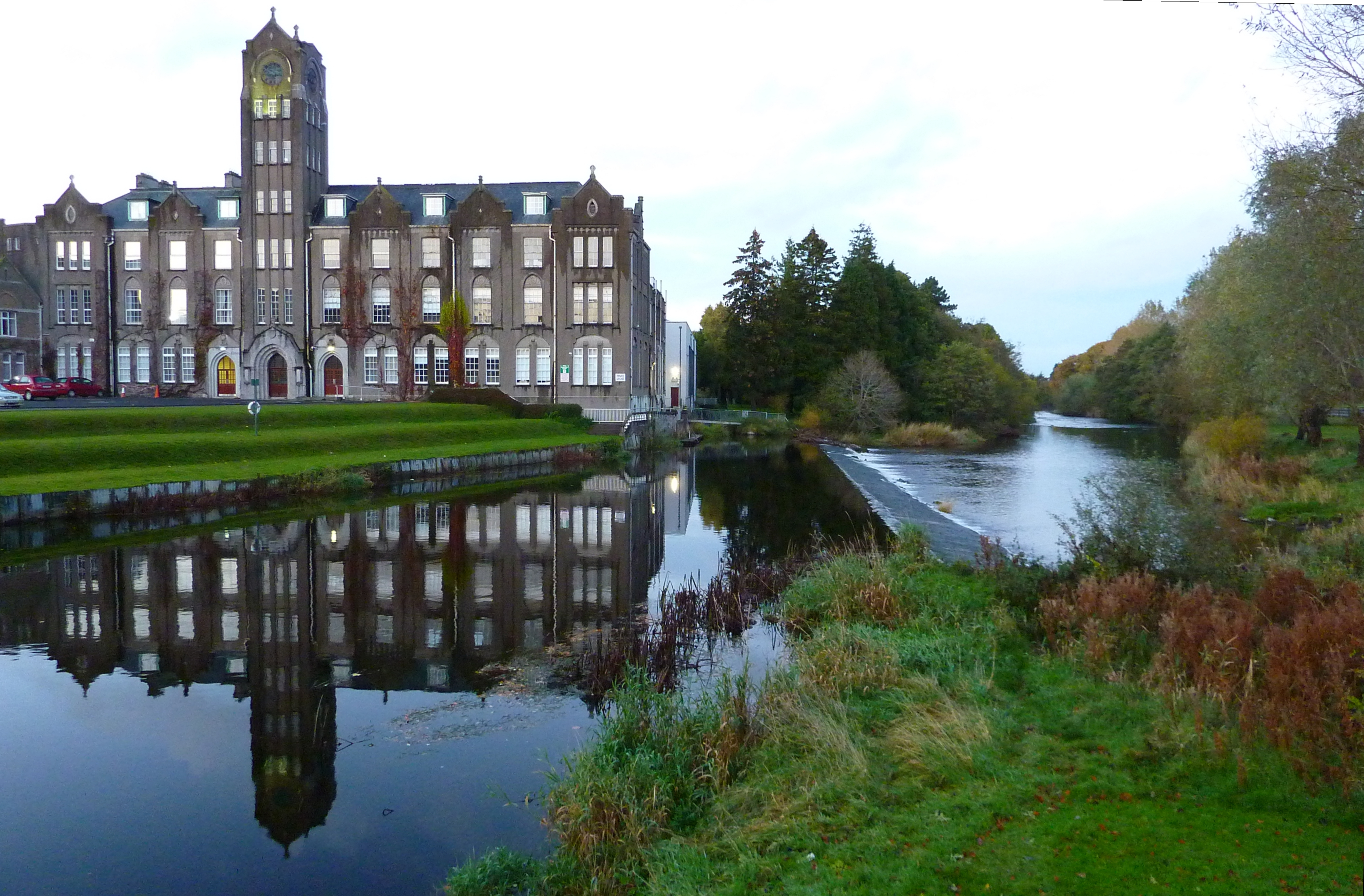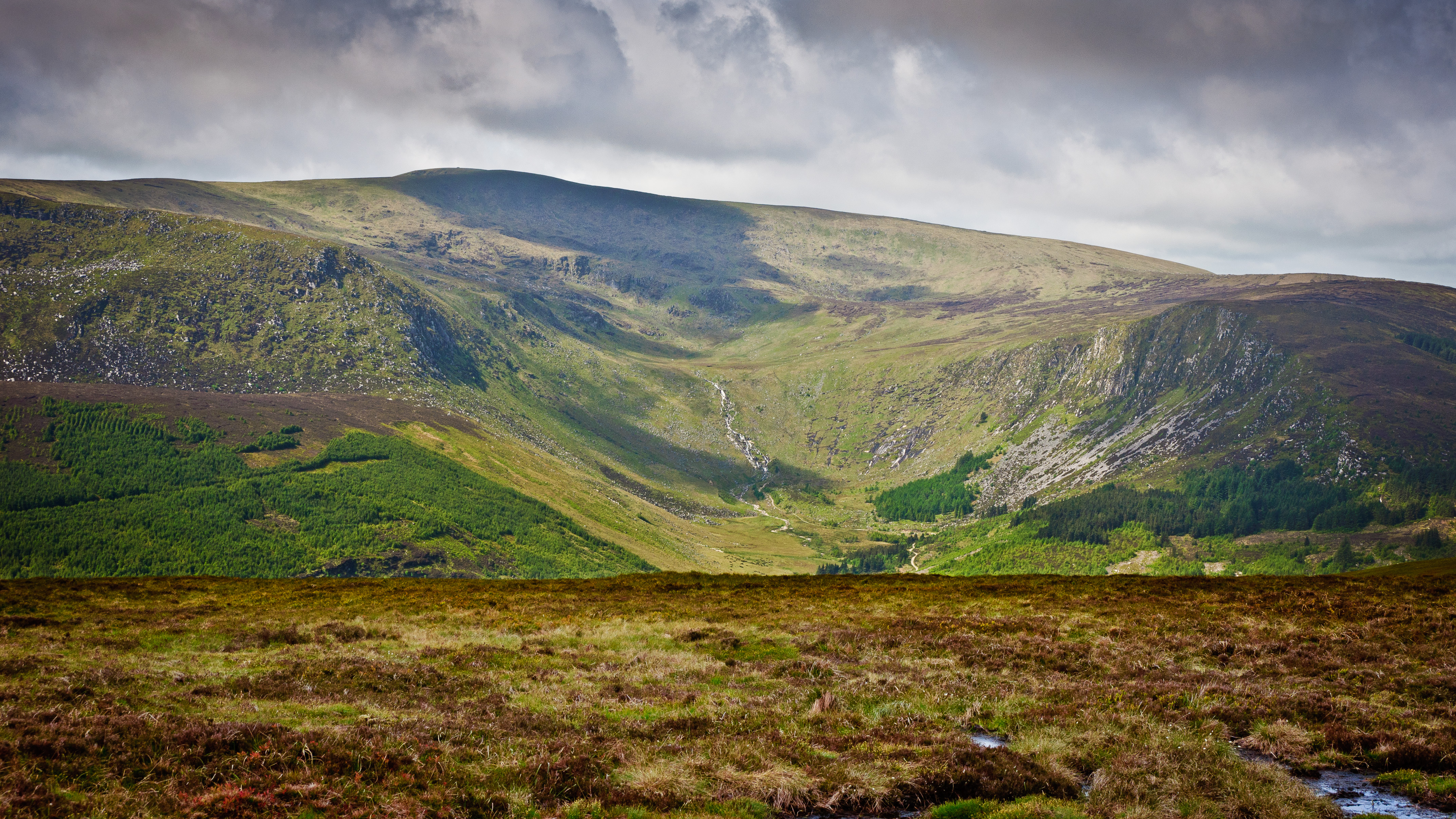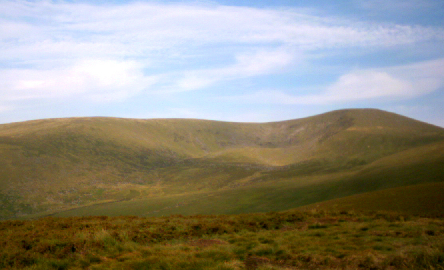|
Uí Máil
Uí Máil were an Irish dynasty of Leinster. They were descended from Maine Mál, the brother of the legendary high king Cathair Mór. The Uí Máil were a dominant dynasty in Leinster competing for the kingship in the 7th century before being eventually ousted by the Uí Dunlainge and retreating east from the River Liffey plain in the 8th century. They are then found along the western foothills of the Wicklow Mountains. The Glen of Imaal, named for them, appears to have been a center of their power. Kings of Leinster from the Ui Mail included: * Áed Dibchine mac Senaig d. 593All dates per ''The Chronology of the Irish Annals'', Daniel P. McCarthy * Crimthann mac Áedo, d. 636 * Fiannamail mac Máele Tuile, d. 680 * Cellach Cualann mac Gerthide, d. 715 Finamnail was ancestor to the Uí Théig (O'Tighe) north of Uí Máil territory just west of the Wicklow mountains, while Cellach Cualann was ancestor to the Uí Ceallaig Cualann (O'Kelly) on the Dublin-Wicklow border in the footh ... [...More Info...] [...Related Items...] OR: [Wikipedia] [Google] [Baidu] |
Leinster
Leinster ( ; ga, Laighin or ) is one of the provinces of Ireland, situated in the southeast and east of Ireland. The province comprises the ancient Kingdoms of Meath, Leinster and Osraige. Following the 12th-century Norman invasion of Ireland The Anglo-Norman invasion of Ireland took place during the late 12th century, when Anglo-Normans gradually conquered and acquired large swathes of land from the Irish, over which the kings of England then claimed sovereignty, all allegedly sanc ..., the historic provinces of Ireland, "fifths" of Leinster and Meath gradually merged, mainly due to the impact of the Pale, which straddled both, thereby forming the present-day province of Leinster. The ancient kingdoms were shired into a number of counties of Ireland#2.1 Pre-Norman sub-divisions, counties for administrative and judicial purposes. In later centuries, local government legislation has prompted further sub-division of the historic counties. Leinster has no official funct ... [...More Info...] [...Related Items...] OR: [Wikipedia] [Google] [Baidu] |
Cathair Mór
Cathair Mór ("the great"), son of Feidhlimidh Fiorurghlas, a descendant of Conchobar Abradruad, was, according to Lebor Gabála Érenn, a High King of Ireland.Foras Feasa ar Éirinn, Section 40, page 259, http://www.ucc.ie/celt/published/T100054/text050.html UCC CELT project. by Geoffrey Keating. He took power after the death of Fedlimid Rechtmar. Cathair ruled for three years, at the end of which he was killed by the Luaigne of Tara, led by Conn Cétchathach. The ''Lebor Gabála Érenn'' synchronises his reign with that of the Roman emperor Marcus Aurelius (161–180). The chronology of Geoffrey Keating's ''Foras Feasa ar Éirinn'' dates his reign to 113–116, that of the ''Annals of the Four Masters'' to 119–122. Genealogy According to Foras Feasa ar Éirinn, Cathaoir Mor was a son of Feidhlimidh Fiorurghlas, son of Cormac Gealta Gaoth, son of Nia Corb, son of Cu Corb, son of Mogh Corb, son of Conchubhar Abhradhruadh, son of Fionn File, son of Rossa Ruadh, son of Fearghus F ... [...More Info...] [...Related Items...] OR: [Wikipedia] [Google] [Baidu] |
River Liffey
The River Liffey (Irish: ''An Life'', historically ''An Ruirthe(a)ch'') is a river in eastern Ireland that ultimately flows through the centre of Dublin to its mouth within Dublin Bay. Its major tributaries include the River Dodder, the River Poddle and the River Camac. The river supplies much of Dublin's water and supports a range of recreational activities. Name Ptolemy's ''Geography'' (2nd century AD) described a river, perhaps the Liffey, which he labelled Οβοκα (''Oboka''). Ultimately this led to the name of the River Avoca in County Wicklow. The Liffey was previously named ''An Ruirthech'', meaning "fast (or strong) runner". The word ''Liphe'' (or ''Life'') referred originally to the name of the plain through which the river ran, but eventually came to refer to the river itself. The word may derive from the same root as Welsh ''llif'' (flow, stream), namely Proto-Indo-European ''lē̆i-4'', but Gearóid Mac Eoin has more recently proposed that it may derive from a n ... [...More Info...] [...Related Items...] OR: [Wikipedia] [Google] [Baidu] |
Wicklow Mountains
The Wicklow Mountains (, archaic: ''Cualu'') form the largest continuous upland area in the Republic of Ireland. They occupy the whole centre of County Wicklow and stretch outside its borders into the counties of Dublin, Wexford and Carlow. Where the mountains extend into County Dublin, they are known locally as the Dublin Mountains (''Sléibhte Bhaile Átha Cliath''). The highest peak is Lugnaquilla at . The mountains are primarily composed of granite surrounded by an envelope of mica-schist and much older rocks such as quartzite. They were pushed up during the Caledonian orogeny at the start of the Devonian period and form part of the Leinster Chain, the largest continuous area of granite in Ireland and Britain. The mountains owe much of their present topography to the effects of the last ice age, which deepened the valleys and created corrie and ribbon lakes. Copper and lead have been the main metals mined in the mountains and a brief gold rush occurred in the 18th century ... [...More Info...] [...Related Items...] OR: [Wikipedia] [Google] [Baidu] |
Glen Of Imaal
The Glen of Imaal ( or ; ga, Gleann Uí Mháil) is a remote glen in the western Wicklow Mountains in Ireland. It is ringed by the Lugnaquilla massif and its foothills, including Table Mountain and Keadeen. Much of the glen is used by the Irish Army as an artillery firing range, and hill walkers who use the glen are advised to observe the times of firing practice and to refrain from picking up strange objects. The Glen of Imaal is the subject of an eponymously titled Irish folk song, and also the place of origin of the eponymous dog breed, the Glen of Imaal Terrier. History Early history The Glen of Imaal is named from the Uí Máil, who dominated the kingship of Leinster in the 7th century. They were ousted by the Uí Dúnlainge from the lowlands of what would be County Kildare, and from that time until the early 13th century were located along the western foothills of the Wicklow mountains. The valley appears to have been a center of their power. By the 14th century, O'Tu ... [...More Info...] [...Related Items...] OR: [Wikipedia] [Google] [Baidu] |
Áed Dibchine
Áed Dibchine mac Senaig (died 595) was a King of Leinster from the Uí Máil branch of the Laigin. He is the first king of this branch to hold the overlordship of Leinster. The ''Book of Leinster'' king lists mention a certain Áed Cerr mac Colmáin who appears as genealogically related to the Uí Dúnlainge and is made to appear this way as the son of Colmán Már mac Coirpre. However, it is Aed Dibchine who was the king at this time. The king lists of the ''Book of Leinster'' appear falsified for the 6th century to give greater claim to the Ui Dunlainge which prevents a clear picture of this era in LeinsterByrne, pg.136; pg.151; T.M.Charles-Edwards, ''Early Christian Ireland'', pg.455 His sons were Rónán Crach, possibly the Leinster king mentioned in the saga "Fingal Rónáin" (The Kinslaying of Rónán); and Crimthann mac Áedo (died 633), a king of Leinster. Notes See also *Kings of Leinster Kings or King's may refer to: *Monarchs: The sovereign heads of states and/o ... [...More Info...] [...Related Items...] OR: [Wikipedia] [Google] [Baidu] |
Crimthann Mac Áedo
Crimthann mac Áedo (died 633) was a King of Leinster from the Uí Máil branch of the Laigin. He was the son of Áed Dibchine mac Senaig (died 595), a previous king. He would have succeeded sometime after the death of Rónán mac Colmáin. His brother Rónán Crach was possibly the Leinster king mentioned in the saga "Fingal Rónáin" (The Kinslaying of Rónán) and is also said to have been a bishop who was slain by Crimthann. In 626 the Ui Neill laid siege to a prince of the Ui Cheinnselaig named Crundmáel Bolg Luatha (died 628). This same prince was slain by Crimthann's rival Fáelán mac Colmáin of the Uí Dúnlainge at the Battle of Duma Aichir in 628. Also, in that year the new high king Domnall mac Áedo (died 642) of the Cenél Conaill ravaged Leinster. Crimthann was defeated and slain at the Battle of Áth Goan in western Liffey by an alliance of his rival Faelan of the Ui Dunlainge with Faílbe Flann mac Áedo Duib (died 637), the king of Munster and Conall Guthb ... [...More Info...] [...Related Items...] OR: [Wikipedia] [Google] [Baidu] |
Fiannamail Mac Máele Tuile
__NOTOC__ Fiannamail mac Máele Tuile (died 680) was a King of Leinster from the Uí Máil branch of the Laigin. He was the great-grandson of Áed Dibchine mac Senaig (died 595), a previous king and grandson of Rónán Crach, possibly the Leinster king mentioned in the saga "Fingal Rónáin" (The Kinslaying of Rónán). His exact accession date is uncertain. The ''Book of Leinster'' gives him a reign of 13 years and the death obit of Fáelán mac Colmáin (died 666) is given as 666 in the Irish annals. In 677 the Laigin fought with the high king Fínsnechta Fledach (died 695) of the Síl nÁedo Sláine at the Battle of Loch Gabor (Lagore, County Meath). There was mutual slaughter on both sides but Finsnechta emerged the victor. In 680 Fiannamail was slain by one of his own people named Foichsechán at the instigation of the high king Finsnechta.''Annals of Tigernach'' AT 680.3 Fiannamail was ancestor to the Uí Théig (O'Tighe) north of Uí Máil territory just west of the Wick ... [...More Info...] [...Related Items...] OR: [Wikipedia] [Google] [Baidu] |
Cellach Cualann
Cellach Cualann mac Gerthidi (died 715) was the last Uí Máil king of Leinster. Cellach's byname is derived from the land of ''Cualu'' which lay around Glendalough. The name Uí Máil may mean "grandsons of the princes". This, along with their ownership of certain objects symbolic of the kingship of Leinster, has suggested that they may once have been considered the rightful rulers of Leinster, at least by themselves. Alternatively, Uí Máil may have derived their name from the Glen of Imaal, in the west of modern County Wicklow, which lay in the centre of their historic lands. Cellach's father was not king of Leinster, but his second cousin Fiannamail mac Máele Tuile (died 680) was. Cellach succeeded his cousin as king of Uí Máil when Fiannamail was murdered by a servant named Fochsechán, probably on the orders of Fínsnechta Fledach. The kingship of Leinster passed to the Uí Dúnlainge in the person of Bran Mut mac Conaill who died in 693, to be followed as king by Cell ... [...More Info...] [...Related Items...] OR: [Wikipedia] [Google] [Baidu] |
Kings Of Leinster
Kings or King's may refer to: *Monarchs: The sovereign heads of states and/or nations, with the male being kings *One of several works known as the "Book of Kings": **The Books of Kings part of the Bible, divided into two parts **The ''Shahnameh'', an 11th-century epic Persian poem **The Morgan Bible, a French medieval picture Bible **The Pararaton, a 16th-century Javanese history of southeast Asia *The plural of any king Business * Kings Family Restaurants, a chain of restaurants in Pennsylvania and Ohio *Kings Food Markets, a chain supermarket in northern New Jersey * King's Favourites, a brand of cigarettes *King's Variety Store, a chain of stores in the USA *King's (defunct discount store), a defunct chain of discount stores in the USA Education *King's College (other), various colleges * King's School (other), various schools * The King's Academy (other), various academies Electoral districts * King's (New Brunswick electoral district) (1867–1 ... [...More Info...] [...Related Items...] OR: [Wikipedia] [Google] [Baidu] |
Kelly The Boy From Killanne
Kelly may refer to: Art and entertainment * Kelly (Kelly Price album) * Kelly (Andrea Faustini album) * ''Kelly'' (musical), a 1965 musical by Mark Charlap * "Kelly" (song), a 2018 single by Kelly Rowland * ''Kelly'' (film), a 1981 Canadian film * ''Kelly'' (Australian TV series), an Australian television * ''Kelly'' (talk show), a Northern Ireland television talk and variety show * The Kelly Family, an Irish-American-European music group * ''Kelly Kelly'' (TV series), a 1998 U.S. sitcom on the WB television network * "Kelly", a 2019 single by Peakboy * Kelly West/ Zelena, a character on ''Once Upon a Time'' * Kelly (The Walking Dead), a fictional character from The Walking Dead People * Kelly (given name) * Kelly (surname) * Clan Kelly, a Scottish clan * Kelly (musician), a character portrayed by Liam Kyle Sullivan * Kelly (murder victim), once known as the "El Dorado Jane Doe" Places Australia * Kelly, South Australia, a locality * Kelly Basin, Tasmania * Hundred o ... [...More Info...] [...Related Items...] OR: [Wikipedia] [Google] [Baidu] |



